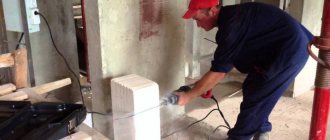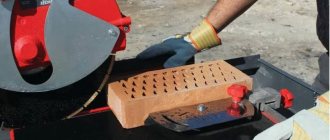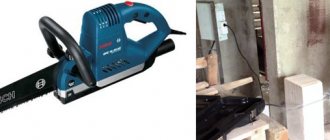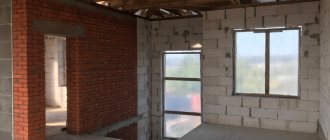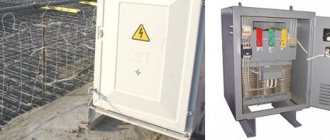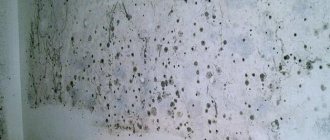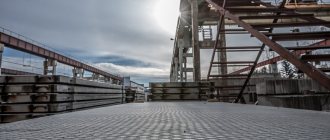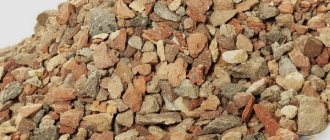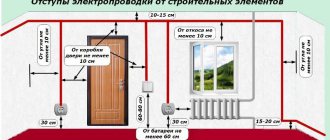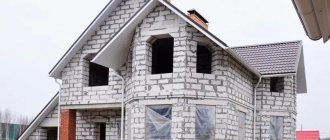Aerated concrete is a lightweight and fragile material that can be easily processed even with hand tools, and power tools can handle it much faster and even more so. When laying aerated concrete blocks, you will have to saw them, grind them, drill them, make grooves and holes. In this article we will talk about all kinds of tools that are useful for processing aerated concrete.
You can cut aerated concrete with hand saws for wood and aerated concrete, but it is better to give preference to a specialized saw, as it will last much longer and will save you money on buying a new blade. And a power tool, such as a reciprocating saw or an alligator saw, will greatly speed up sawing and save you effort, which would be better spent on laying the blocks themselves.
Special hacksaw for aerated concrete
A hand saw for aerated concrete is very similar to a saw for wood, the differences are in the teeth, which have a different shape, size, and wear-resistant coating. A hacksaw for a gas block is very justified on private construction sites, where the volume of work is small and the number of cuts is small.
With the help of such a tool, additional blocks are cut, holes are made in the wall, and window and door openings are adjusted.
Note that for smoother and more convenient cutting and fitting, auxiliary tools will be useful, such as a special corner and aerated concrete grater.
How to cut a gas block with your own hands + safety precautions
To get an even and beautiful cut, you will need an angled stencil (miter box), like the one shown in the picture.
This device guides the saw blade in two planes at once. It must be installed at the planned cutting location. Please note that block marking is greatly simplified. If you don’t want to buy a stencil, you can make it yourself from scraps of profile pipe. It is better not to use materials such as chipboard, as they will quickly become thin and inaccurate.
- After installing the guide, the sawing process begins from its corner. The hacksaw enters the gas block easily, so do not press too hard - after all, it is necessary that the cutting products are effectively removed along the way.
- Complete the cut with the saw in a horizontal position to avoid chipping at the corner.
- The cut block will fall to the floor, so you need to place your feet in advance so as not to get injured. For the same reason, it is necessary to work in rough closed shoes.
- All work must be performed in thick clothing with long sleeves and gloves, especially if you use a power tool.
- The face should be covered with a mask or respirator to avoid inhaling large amounts of dust. A hat is not essential, but it will help you stay clean at the end of the working day.
Reciprocating saw
An electric reciprocating saw is an excellent assistant for cutting aerated concrete, which saves effort and time. The cost of such a saw is reasonable, and for private construction its purchase is completely justified, especially since it can also cut wood.
The principle of operation of a reciprocating saw is in a replaceable blade, which very quickly makes rotational and translational movements. The length of the blade can be different, and for more convenient work we recommend blades longer than the thickness of the block.
Advantages of a reciprocating saw: good speed, cutting accuracy, minimal groove width, reasonable price.
Electric chain saw
An electric chain saw is versatile, so it can be found in every man’s home workshop. The device consists of the following elements:
- Cutting element.
- Saw bar.
- Tension mechanism.
- Chain lubrication system.
- Blocking shield.
The internal part is arranged as follows: a closed loop moves along a guide passing through two sprockets. The front sprocket is fixed at the end of the guide and is driven. At the rear there is another element mounted on the drive shaft. It is connected to an electric motor and starts the process of moving the chain. There is a protrusion on the body near the rear sprocket.
For smooth operation of the saw, it is necessary to correctly adjust the tension by tightening a special screw on the body. The cutting process is ensured by the circular movement of the blades mounted on the contour.
pros
Experts believe that chain saws are the most optimal solution for arranging U-configuration blocks. This is due to the end cut. Other advantages include:
- Increased material processing speed. This is due to the increased performance of the engines.
- Comfortable weight balancing: with this saw you can make high-quality cuts at an angle and overhead.
- The kit includes guide rails, the length of which varies from 30-40 cm.
The advantage of chain models is their relatively low cost.
Minuses
The key disadvantage of a chain saw is the rapid wear of the cutting blade, since it is designed for wood processing, but is used for other purposes. To prevent such a problem, it is better to buy a special chain with pobedit soldering.
It costs more than a simple chain, but lasts longer. In Moscow you can find different models of such devices with different characteristics and properties.
If you have to perform large volumes of work in difficult conditions, the sprocket teeth begin to grind down, which makes them unsuitable for use. The process of replacing sprockets does not require large investments, but it is a waste of valuable time, since it becomes necessary to contact the service center in search of the optimal part.
The electric motor is afraid of exposure to dust, which accumulates with intensive use of gas silicate blocks. As a result, the saw becomes unusable and cannot be repaired.
Manual wall chaser
The most common tool for cutting aerated concrete is a regular wall chaser, which is a tube with a handle. The principle of operation is to press hard on the aerated concrete and pull in the desired direction, while selecting pieces of aerated concrete. For a more even cut, it is worth using a guide block made of wood, which is temporarily secured with nails or self-tapping screws. Among the important advantages, we note the absence of dust and noise during operation.
Features of the material
Aerated concrete is a lightweight building material that can be cut with your own hands
Aerated concrete is made from a mixture of Portland cement and sand, into which reagents are poured to form foam. Most often, ordinary powdered aluminum, aluminum pastes and powders are used for this. As a result of their reaction with Portland cement, small air bubbles are evenly distributed throughout the structure of the solution.
Depending on the density, aerated concrete blocks are divided into brands:
The compressive strength of aerated concrete is 1.5 - 3.5 kgf/cm². In a dry state, the thermal conductivity of aerated concrete is 0.12 W/m°C. The density of this material is 400 - 1200 kg/m³.
Enclosing and load-bearing structures built from aerated concrete belong to fire safety classes I and II.
This material is environmentally friendly, since no toxic substances are released from it during operation.
Due to its good performance characteristics, aerated concrete is widely used in low-rise construction.
Grinder and electric wall chaser
There are special attachments for the grinder, which are two metal disks that leave behind two even grooves.
There are also specialized grinders, the so-called electric wall chasers, in which you can adjust the width and depth of the groove. After cutting, the aerated concrete itself must be selected using a chisel and hammer. Among the advantages, we note the high speed and evenness of the cut, and among the disadvantages, there is a large amount of dust, which will require connecting a vacuum cleaner.
Alligator
This toothy beast is presented by DeWalt.
The idea is good - a reciprocating saw with two files moving in opposite directions. In theory, this should not lead to movement of the sawn gas block. The range of these saws is quite wide – right up to saws for porous ceramics. It would seem that if porous ceramics are sawed, then aerated concrete should be sawed like clockwork. But this is in theory.
I purchased this saw in 2012 – an outgoing model series. At first it was really easy to saw – but only thin blocks. With thick ones, the small stroke of the saws was not enough to throw dust out of the seam, and the saw and the block began to “sausage.” And then the moment of truth came. The saw was given to guest workers from Latvia for use. After 10 days they brought it with the words - your saw does not cut. And the saw really didn’t cut. Although it was cleaned every day, the dust that got into the gap in the bar between the saw blades and the guides gradually bent the guide bars - and the width of the bar became larger than the width of the cut. The reason was that they were sawing wet blocks. It's likely that if you cleaned it more often (say, every 15 minutes), the saw would last longer.
In fairness, it should be noted that a bricklayer friend who also purchased such a saw in the wake of the first euphoria after our purchase, the saw is still in use. But he doesn’t saw it much, cleans it regularly and lubricates it. This saw also has a serious design flaw - it can only be cut from above. At the end of the bar there is a saw attachment, which, in principle, does not allow this saw to be cut into the wall. Its other drawback is its inhumane price. Corded copies cost under 30 thousand rubles, and battery-powered ones... I sold my saw to that bricklayer at the price of saws, the price of which also seemed inadequate, which I was terribly happy about - as if I had gotten rid of a suitcase without a handle.
How to cut aerated concrete blocks: 5 suitable tools
Lightweight and durable aerated concrete is highly valued by developers. It is used as insulation and as a building material for the construction of residential and commercial buildings. Trimming is often required during the construction process. If you have some skills, it is not difficult to do it yourself. Let's figure out how to cut aerated concrete blocks and how to do it correctly.
Devices for work
We found out how to cut a gas silicate block. It remains to be seen what needs to be done to improve the quality of work. For this purpose, there are auxiliary devices that help to avoid errors in operation:
- Blade movement limiter. Allows you to press the saw against the block while cutting, facilitating the process. Quality, process speed and accuracy are improved. The position of the stop is shifted along the axis to ensure the saw pitch during cutting.
- Pendulum device. Helps to increase cutting speed, remove saw waste, increase the service life of blades, and reduce stress on the hand.
- Miter box - made independently. It is a rectangle, shaped like two letters “P”, which are fixed on the working surface in series. There is enough space between them to fit the block. There is a gap between the elements for the hacksaw blade.

